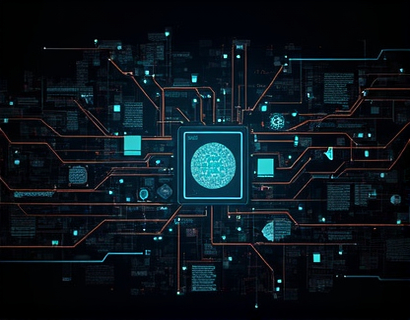Advanced Security Solutions for Elite Cryptocurrency Clients
In the realm of cryptocurrency, the importance of robust security measures cannot be overstated. As high-net-worth individuals, celebrities, sports stars, and entrepreneurs increasingly engage in the digital asset space, the need for advanced defense strategies and operational security measures becomes paramount. This article delves into the sophisticated security solutions designed specifically for elite clients in the cryptocurrency sector, ensuring unparalleled protection for their digital assets.
Understanding the Threat Landscape
The cryptocurrency market, while offering immense opportunities, also presents a complex and evolving threat landscape. Cyber threats range from sophisticated malware and phishing attacks to more intricate forms of fraud and insider threats. For elite clients, the stakes are higher, as their investments and personal data are often more valuable and targeted by malicious actors. Understanding these threats is the first step in implementing effective security measures.
Comprehensive Risk Assessment
A tailored security solution begins with a comprehensive risk assessment. This process involves a detailed analysis of the client's digital footprint, identifying potential vulnerabilities and assessing the likelihood and impact of various threats. For elite clients, this assessment must be thorough and ongoing, as new threats emerge constantly. Key areas of focus include network security, software vulnerabilities, human factors, and compliance with regulatory requirements.
Advanced Network Security Measures
Network security forms the backbone of any robust cybersecurity strategy. For cryptocurrency clients, this includes implementing state-of-the-art firewalls, intrusion detection and prevention systems (IDPS), and secure network segmentation. These measures help to create multiple layers of defense, making it significantly harder for attackers to penetrate the network. Additionally, regular network audits and penetration testing are essential to identify and mitigate potential weaknesses.
Cryptographic Best Practices
Cryptography is the cornerstone of cryptocurrency security. Elite clients should employ advanced cryptographic techniques to protect their assets. This includes using strong, unique private keys for each wallet and implementing multi-factor authentication (MFA) for all access points. Hardware wallets, which store private keys offline, offer an additional layer of security against online threats. Regularly updating cryptographic algorithms and protocols is also crucial to stay ahead of emerging threats.
Secure Software Development Lifecycle (SDLC)
The security of cryptocurrency applications and platforms is heavily dependent on the software development lifecycle. Adopting a secure SDLC ensures that security is integrated at every stage of development, from design to deployment and maintenance. Key practices include threat modeling, code reviews, static and dynamic analysis, and continuous monitoring. For elite clients, engaging experienced security professionals to conduct these processes can significantly enhance the security posture of their digital assets.
Identity and Access Management (IAM)
Effective identity and access management is critical for protecting sensitive information and assets. Implementing a robust IAM system ensures that only authorized personnel can access critical systems and data. This includes role-based access control (RBAC), least privilege principles, and regular audits of user permissions. For elite clients, multi-factor authentication and biometric verification can further strengthen access controls, reducing the risk of unauthorized access.
Data Encryption and Storage
Data encryption is a fundamental security measure for protecting sensitive information. Elite clients should encrypt all data at rest and in transit using strong encryption standards such as AES-256. Additionally, secure data storage solutions, such as encrypted cloud storage with strict access controls, should be employed. Regular backups of encrypted data, stored offsite and in secure locations, ensure data resilience against loss or corruption.
Incident Response and Recovery
Despite the best preventive measures, security incidents can still occur. Having a well-defined incident response plan is crucial for minimizing damage and restoring operations quickly. This plan should outline clear steps for detecting, containing, eradicating, and recovering from security breaches. Regular drills and simulations help ensure that the team is prepared to respond effectively. For elite clients, a dedicated incident response team with 24/7 support can provide an added layer of reassurance.
Continuous Monitoring and Threat Intelligence
Continuous monitoring is essential for detecting and responding to threats in real-time. Implementing advanced monitoring tools and systems allows for the continuous analysis of network traffic, system logs, and user activities. Integrating threat intelligence feeds provides insights into emerging threats and helps in proactively addressing potential vulnerabilities. For elite clients, customizing monitoring solutions to focus on specific threats relevant to their operations can enhance overall security.
Compliance and Regulatory Adherence
Compliance with relevant regulations and standards is a critical aspect of cybersecurity for elite clients. This includes adhering to guidelines such as the General Data Protection Regulation (GDPR), the Payment Card Industry Data Security Standard (PCI DSS), and industry-specific regulations. Regular audits and assessments help ensure compliance and can also identify areas for improvement. Engaging with legal and compliance experts can provide valuable guidance in navigating the complex regulatory landscape.
Education and Awareness
Human factors often play a significant role in security breaches. Educating clients and their teams about cybersecurity best practices is essential. This includes training on recognizing phishing attempts, safe browsing habits, and secure password management. Regular security awareness programs and simulations can help reinforce these practices and create a culture of security within the organization.
Customized Security Solutions
No two elite clients are the same, and their security needs can vary significantly. Tailoring security solutions to meet the specific requirements and risk profiles of each client is crucial. This may involve combining multiple security technologies and strategies to create a comprehensive defense framework. For instance, a high-profile entrepreneur might require advanced monitoring for insider threats, while a celebrity may need enhanced privacy protections for personal data.
Partnership with Security Experts
Collaborating with experienced security experts can significantly enhance the security posture of elite clients. These experts bring a wealth of knowledge and experience in dealing with complex cybersecurity challenges. Partnering with a trusted security firm can provide access to cutting-edge technologies, best practices, and continuous support. This collaboration ensures that clients benefit from the latest advancements in cybersecurity, even as threats evolve.
Conclusion
In the ever-changing world of cryptocurrency, elite clients must prioritize advanced security solutions to protect their digital assets and personal information. By implementing a comprehensive risk assessment, advanced network security measures, cryptographic best practices, and a robust incident response plan, clients can significantly reduce their exposure to cyber threats. Continuous monitoring, compliance adherence, and education further strengthen the security framework. Partnering with security experts ensures that clients have access to the latest tools and expertise, providing unparalleled protection in a complex digital landscape.










































